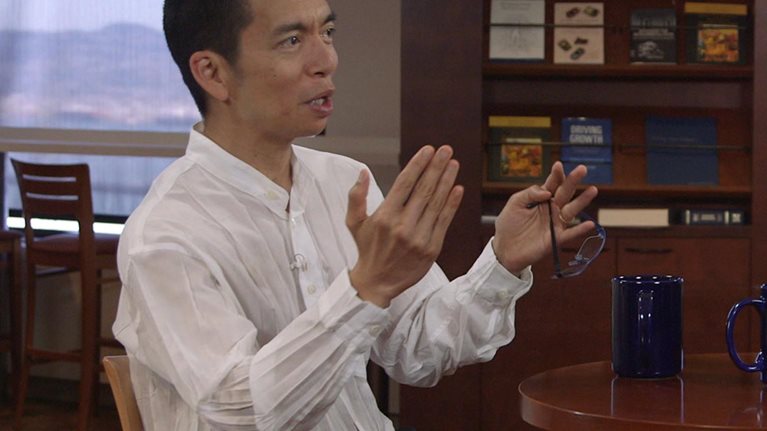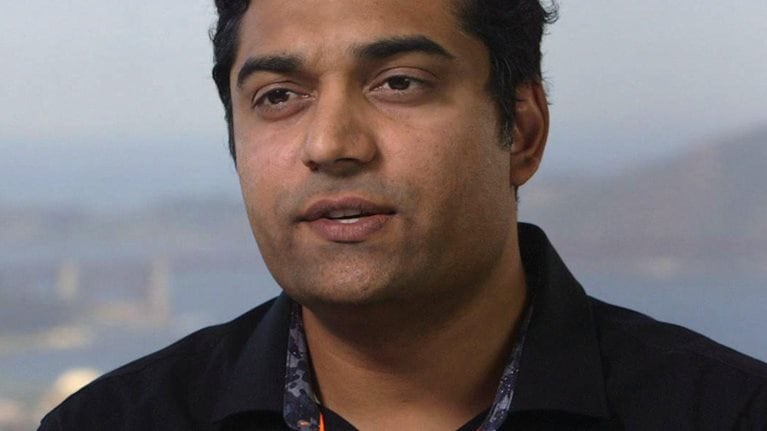Experience design is all about meeting customers where they want to be and creating products that improve the process of getting there. In this episode of the McKinsey Podcast, Hugo Sarrazin, a McKinsey director, and Jennifer Kilian, a digital vice president of McKinsey Digital Labs, talk with McKinsey’s Barr Seitz about what design means, how it can drive change in an organization, and what companies stand to gain from making it a priority. An edited transcript of their conversation follows.
Want to subscribe to The McKinsey Podcast?
Podcast transcript
Barr Seitz: Hello, and welcome to the McKinsey Podcast. I’m Barr Seitz, global publishing head of McKinsey’s Marketing and Sales and Digital Practices, and I’m very happy to introduce our two guests today. First, Jennifer Kilian, a digital VP of McKinsey Digital Labs in our New York office.
Jennifer Kilian: Hi, Barr, thanks, it’s great to be here.
Barr Seitz: Thanks, Jennifer, for joining us. We also have Hugo Sarrazin, a director in our Silicon Valley office and global leader of McKinsey Digital Labs. Hey, Hugo.
Hugo Sarrazin: Hey, Barr, nice to be here.
Barr Seitz: You two were the authors of “Building a design-driven culture,” which was one of the top articles published in 2015 on McKinsey.com. We’re going to be addressing how to get beyond the hype around design, what design means to an organization trying to become more digital, and where design is going. So let’s kick off the conversation. Jennifer, the first question is for you.
In preparing for this podcast, I was struck by how broad the definition of design can be. You have product design, industrial design, design systems, and graphic design. When you talk to a CEO, how do you explain what design is and what its value is in a business context?
Jennifer Kilian: Design thinking is a methodology that we use to solve complex problems, and it’s a way of using systemic reasoning and intuition to explore ideal future states. We do this with the end user or the customer in mind, first and foremost.
The reason that it matters for business is because it’s the single biggest competitive advantage that you can have, if your customers are loyal to you—because if you solve for their needs first, you’ll always win. As a former CEO of IBM stated, very insightfully, “Good design is good business.”
Hugo Sarrazin: Jennifer described it nicely. It is a broad term, it does mean a lot of things for different disciplines, from industrial design to experienced service design to digital design. The reason I think it’s becoming so important today is we’re seeing the limitation of traditional ways of approaching problems.
Historically, we were perhaps not fully thinking about the customer experience or thinking through the level of interactions. I’m generalizing a bit, as there have been some fantastic products and services that have been built and designed over many, many years. But I think right now it’s coming of age. We have a new generation of designers who were trained to understand how to blend technology and business, and they’re a lot more agile in moving from these different spheres. So instead of having siloed conversations, now we can have an integrated conversation. And that’s why design thinking and everything associated with it is now more central to even business strategy, marketing strategy, marketing execution, operations, and product design.
Barr Seitz: So, as you say, Hugo, design has made it to the big leagues now. But as with any topic that comes into the media glare, hype can quickly take over, and you can certainly see that when it comes to design these days. Can you help to explain where the hype stops and the reality kicks in when it comes to design?
Hugo Sarrazin: We’re certainly at a point where the hype is exceeding the capability, and in no way do I want to suggest that there’s not more to be done around design and bringing that to the forefront of a lot of business activities.
For design, where the boundary can be set is not very clear. It will vary by industry, and it will vary by function. But I can make a few suggestions. The first one is, historically, strategy was all about where to compete and how to compete, and there were traditional ways of defining where to compete. You could define the customer segment, you could define the geography, you could define the channel, and you could define the products. All of it was trying to beg some sustainable, competitive advantage.
With the advent of some really different technologies, we are now able to engage the customer in a very, very, very different way, on an ongoing basis, with relevant information, in real time. Experience design is now a source of competitive advantage. If you think about some of the iconic products—and not to be too cliché with Apple or Uber or even Airbnb—some of the different ways of bringing the user experience into the forefront, it is a way to fundamentally compete.
That’s the reality today. If you’re a strategist, if you’re a CEO, and you’re thinking about how to differentiate your company, your services, and you’re not thinking about that experience, you’re probably missing out on a very, very important lever. That’s one.
The second piece, as I hinted at earlier, is we have a new generation of business schools who are training all the students on design thinking. That brings many new capabilities into the market. We’re seeing more technologists, who have a greater appreciation of design and use design earlier in the process in an integrated way.
We’re also seeing designers who go to design school being trained to be both technologists and business leaders. We are at a point where the talent model has changed, and you have more talented individuals who can work across all three places, which were historically siloed.
Barr Seitz: Let’s get to the Holy Grail question, Jennifer. What is design really worth? We’ve all had that experience where you first saw an iPod or had a great experience on an airline, and thought, “Wow.” So, it’s important, but how much is design actually worth?
Jennifer Kilian: There are several layers to peel back with that question. The first one we react to as consumers ourselves. We fall in love with objects or service experiences because of the care that designers took to bring us the best possible design that met our needs or delighted us. That’s a visceral attachment to good design. Likewise, we notice when things are poorly crafted or when we’ve had disappointing experiences that could’ve been made better—a real missed design opportunity.
In this first layer, design is about adding value to our lives as people, as individuals. At a second layer, we can look to design as a much more strategic business lever. We see in the design management index that design-oriented companies have outperformed others for the past ten years.
But how do you achieve that? We’ve been working in a new area that we’re calling quantified experience design to do just that. We try to understand the end-to-end customer journey we want to design for and the signature moments of delight that we could present to the user at any given point in time as they interact with us. Thinking about those moments—and sketching them out as concepts and bringing them back to users to understand and validate them before we bring them to market—allows us to figure out what the impact will be.
We can measure impact based on revenue increase or on customer-satisfaction measures like Net Promoter Score—the things that allow us to smartly prioritize which concepts we’re going to put most of our design attention and effort into before we bring things to market. It’s a much more mature way of experiencing design in the market today and of thinking about the value of design in terms of its worthiness to a company’s bottom line as well.
Hugo Sarrazin: I think we’re at a very, very exciting time historically. If you go back to the roots of industrial design, you build the product, you try to make it the best you can, you release it in the market, and you wait—you wait for those experiences that the consumer has, these interactions—you hope that you get market share, and then the product is a booming success.
With technology the way it is today, you can instrument your design like you’ve never been able to do in the past. That’s an exciting way to measure the impact of good design. You can do experiments, and you can get a lot of information and all the capabilities associated with A/B testing, to help you refine what you’re creating in terms of an experience with technology.
It’s an interesting time. I’m not suggesting that everything is going to become A/B testing, but you can now instrument your design in a way that you could not previously. Good design will be very smart about putting in place those measurement tools to provide the feedback to the designers.
Jennifer Kilian: Right, and it’s moving even beyond A/B testing, in the sense that we have multichannels to collect data about our users—to be really smart about one-to-one experiences. And even thinking about measuring those experiences and those design moments before they even become part of that A/B model. It’s a nice, predictive way of attaching value to design. Then as you say, Hugo, to measure and iterate that impact in an ongoing manner. It becomes this continuous conversation about design with our customers.
Barr Seitz: It’s interesting, you’re talking about design almost, technically speaking, in terms of measurement. But there’s also an interesting element of empathy in this. In your article, Hugo, you mention empathy as the core element of good design, and clearly understanding what motivates your customer is important for the business. And when you get it right, the experience builds value for the customer and the business. But where’s the trade-off between empathy and business?
Hugo Sarrazin: I don’t think there’s a trade-off. When you get to the core of customer needs, and you strike a chord, and you’re delighting them at these moments of truth, as Jennifer mentioned, you’re going to create a delightful, engaging experience where you’re going to create successful products, and that’s good business. At the end of the day, it’s at the heart of designing perfect experiences or terrific products.
What’s interesting is—and the word empathy is sometimes overused, but I still think it’s one of the better ones we have at this point to describe this quest which is central to what designers love to do—is to understand the why. Why are people doing this? What’s the problem they have? What are their expectations?
If you dig deep, and try to understand that, there are insightful things you can discover about the product you’re trying to design, or the service you’re trying to create. As we move forward, I think we’re going to see more and more of that empathy thinking being embedded in the design process of products, service, and employee onboarding—just to make sure that we really, truly understand what makes a difference. Then we double down on those things that make a difference, and we skip the things that make less of a difference. This is just good business sense, and it’s exciting that we’re bringing an extra layer of thinking around what the customer is experiencing, or what the customer is expecting.

Would you like to learn more about our Digital Practice?
Barr Seitz: But is it possible to go too far? Is it possible to overinvest in design, so that it doesn’t make business sense?
Hugo Sarrazin: It is possible. There are plenty of ways to design goofy experiments that can last for years on end. By no means are we suggesting that we should set these things up. But it’s often a good investment of time and resources when you are trying to build a new business model, where you are trying to build a new product, or a new service, to go down to the root cause. Where it becomes really, really dangerous is when you’re not sure what you’re hunting for at all, and you go and explore in a too open-ended way problem statements that are poorly defined.
Barr Seitz: It’s becoming clear that what you’re really talking about is this idea of a culture around design. Jennifer, you write about this in your article when discussing digital transformations in general. The conversation quickly focuses on culture because that’s such a core element of the organization. What does a design-driven culture look like, and how can a company get there?
Jennifer Kilian: Culture is extremely important to the success of a design-thinking-led organization. There are four elements there. The first one is to understand the customer, and to make that everyone’s job in the organization—not just the design team or the user-experience or research-team’s job.
Some examples of that are organizations like Amazon, where the executive team is required to call in and visit the call centers, and listen to customer needs firsthand. That’s a great example where everybody is in charge of understanding what the customers’ needs, motivations, pain points, and behaviors are, and for making them paramount in solving business problems. That’s really important. Understanding the customer is not just the job of the designer.
The second is thinking about how we bring that empathy that Hugo was speaking to into the organization, making sure that people are thinking about things from the lens of the people that they’re designing for. That could mean creating personas that people rally around, or archetypes, or ways of communicating the target audience that speaks beyond the demographics. It’s focusing more on what’s in the heart and the mind of the people that we’re designing for.
Then, thinking about that empathy in a way that becomes endemic, as a part of the culture. Teaching not only the new hires and new talent that we bring in, this way of design thinking and empathizing, but also the incumbents, and making sure that everybody feels that empathetic drive and ability to refer, first person, to who they’re designing for. Not just think about it from a technology-stack lens, or a business-process lens, but to also keep that human hat on all of the time.
The third is to design in real time. Hugo alluded to some of this: thinking about design, technology, and business all coming together, and iterating together. In our article, we call this the braided approach. We’ve moved from an era of culture using agile in a development environment to thinking about being agile or nimble across our business-design thinking and technology planning all together, and having those teams work as hybrid teams, sitting together, working together, checking in, and keeping each other abreast of any issues that come up. That’s a great way to embody design, in becoming a design-driven culture, and becoming a team that is high performing and works together in an agile way.
Which leads to the fourth point, which is to act quickly. We have the means now to be able to hypothesize, design, and test quickly, both at a broad scale and at a very focused, one-on-one scale, whether that’s digitally or bringing things to market in prototype fashion.
That’s another way to shape the culture, because the culture that makes things together can experiment and succeed, and fail, quickly—and learn. It becomes a much more learning-driven culture, that learn-test-learn thinking that brings things to market that are more successful and refines faster over time.
So, understanding the customer being everyone’s job, keeping empathy as central to the organization, designing in real time, and being able to act quickly are the main pieces of the design-driven culture. Of course, there are the trappings that make those things easier to embody. Things like flexible work spaces that have great areas for collaboration, making it easy to come together quickly. Rooms that can be set up so that there are hybrid teams sitting together that are cross-functional. Thinking about breaking down any traditional barriers and walls to make it easier to collaborate, easier to keep humans first, and easier to think about how we learn, and test, and fail, and get things to market quickly. That’s how design thinking and design-driven cultures allow businesses to be more successful and have greater impact.
Hugo Sarrazin: Design is about learning, and what could be a greater gift than to have an organization that’s constantly learning? That every interaction is an opportunity to learn something, that you withhold judging, and you try to find ways to take an incremental opportunity to learn something new about yourself, about the customer, about another person on the team. It raises the game for everybody inside a company, if everybody’s equipped with a minimum language of design thinking. They approach the problem differently, they reframe the problem differently, and you can create more win-wins rather than being constantly in negotiation, where there’s obviously somebody that’s going to lose.
Barr Seitz: And your point, Hugo, about design being about learning, it emphasizes this point around design as an active thing that companies do, and the bias for action, which I think is one of its clear attractions. Then certainly the conversations about design are about execution, creating a great experience or creating a great product, testing, and learning. But what about design’s role in business strategy? How should companies and executives think about design informing strategy?
Hugo Sarrazin: It’s a big opportunity, and somebody should rewrite all the business-school books. Traditional views of strategy, of where and how to compete, need to be updated to include that there’s a new dimension. You can compete on customer experience, and that is a fundamental dimension of competition and a source of sustainable, competitive advantage.
If you’re able to understand the needs of the customer, and you have an organization that’s good at doing this on an ongoing basis, you can create engagement and loyalty—and something truly special that is the bond between a company and its customers; it’s a bond between a company and its employees. By the way, you can apply a lot of the same tools and methodology in making sure that the internal processes are properly designed.
So, it is a strategic weapon that some of these disruptors, who are attacking established companies, are finding as a way to exploit. Therefore, as a strategist, you need to include that in your arsenal. Be open-minded to the discovery process that’s embedded in design thinking, be open to creating a learning environment, and be clear that no matter how clever one is we don’t always know the future.
It would be much better to create a strategy that is adaptable and flexible, that can take input and insight from a customer, and apply design thinking to help you refine your strategy as you execute it.
Barr Seitz: This has been a great conversation. Thank you, Jennifer and Hugo, for joining me. If you want to read Jennifer and Hugo’s article, “Building a design-driven culture,” you can find it on McKinsey.com. You can also follow them on Twitter. Jennifer is @PicassoJK2, and Hugo is @HugoSarrazin. You can keep up with the latest from McKinsey on digital topics by following us @McKinseyDigital. Thank you for joining us today.
Hugo Sarrazin: Thank you.
Jennifer Kilian: Thank you.


